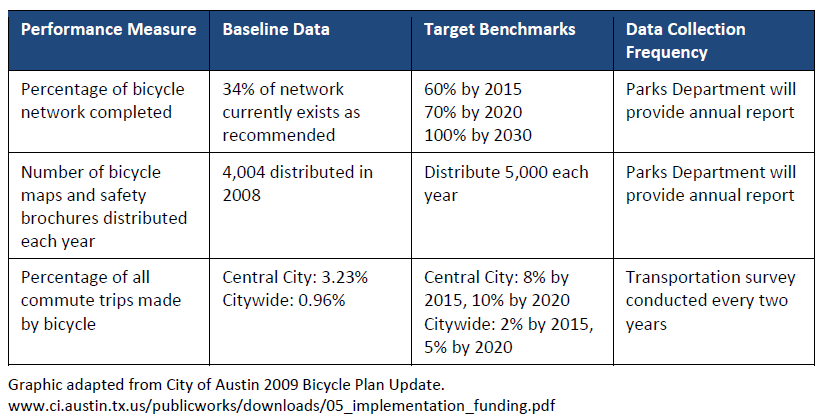Measuring Progress
Involving the Public
Professional and citizen planners face challenges when implementing community plans. One of the greatest challenges is gaining acceptance of new codes, policies and other tools when the consequences of implementing the tools is unknown. Communities can ease these concerns by involving the public at the onset of the planning process, explaining the tools that will best serve the community, and showing real examples of where they have been successfully employed.
Sometimes an outside consultant can assist in this process by providing visual examples from a broad sample of work. Other communities may choose to host trips for the plan commission to see first-hand the results of a particular planning tool in action in another community. Inviting municipal officials to speak from jurisdictions that have implemented the tool can also be helpful.
Measuring Progress
Communities with successful plan implementation programs measure progress towards achieving their goals. Prior to adopting a plan, a community should discuss how it will measure success. Even if a particular goal cannot be precisely measured, the process of discussing how progress will be evaluated is extremely valuable.
Performance bench-marking is one technique for eliciting desired future conditions and measuring progress towards achieving those goals. Sample performance measures for a bicycle master plan below.
Plan Implementation Progress
The City of Austin Bicycle Master Plan includes target performance measures, an assessment of current progress, and a plan for future data collection.

Each measure includes baseline data, a target benchmark that is specific, measurable and objective, a data source, and a timeline for tracking progress.1
An annual report may also be used to measure plan implementation progress. The report should document planning activities that took place over the past year, identify strengths and weaknesses of the planning program, and chart a course for future action. The report may be prepared by the plan commission, planning staff, or an oversight committee comprised of individuals responsible for plan implementation.
If a community has made significant progress towards reaching its goals, it should take time to celebrate success. If not, the assessment process should be used as an opportunity to reenergize the community’s plan implementation efforts.
1Additional sample benchmarks may be found in the Growing Smart Legislative Guidebook, Chapter 7-504. www.planning.org/growingsmart/guidebook.




